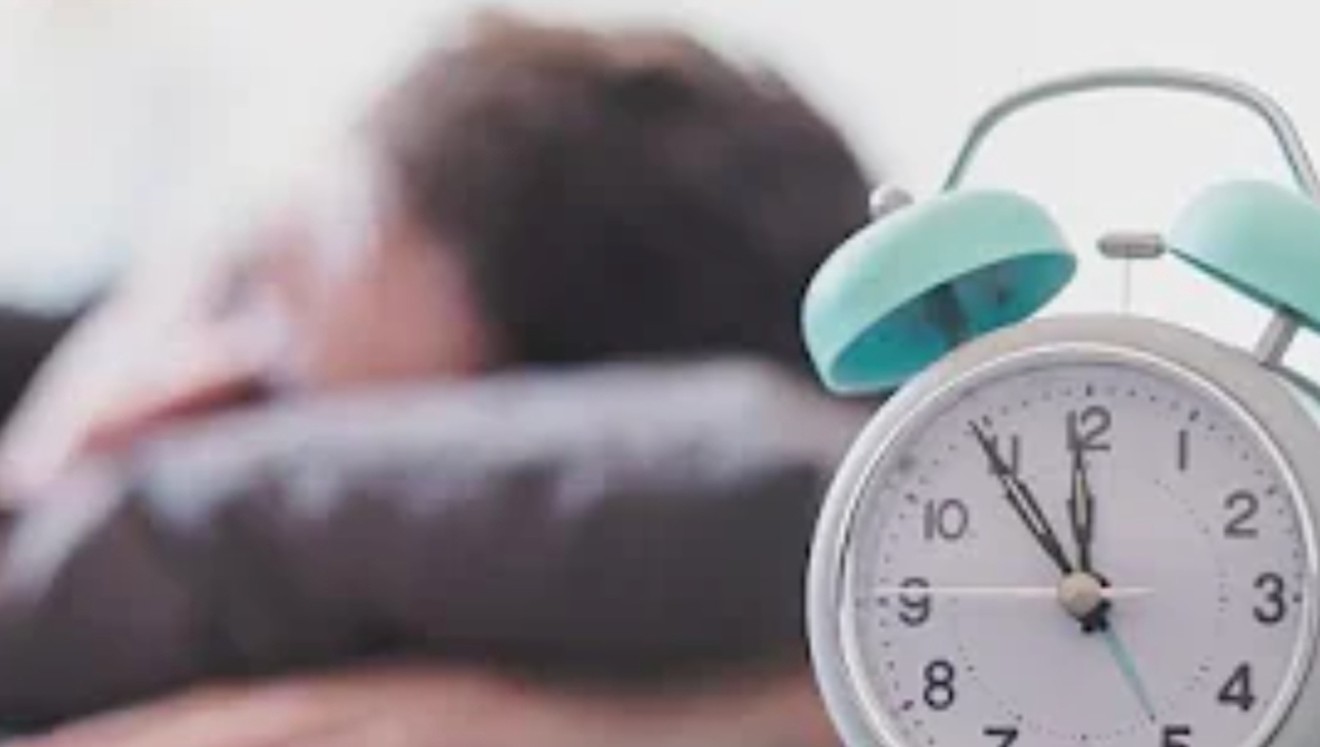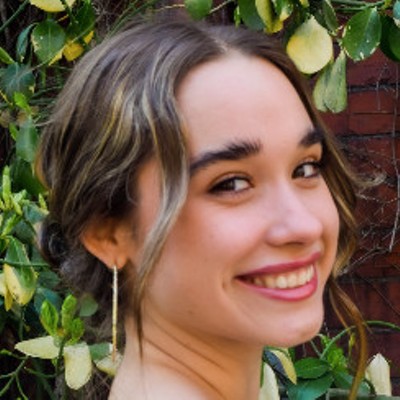A switch to Daylight Saving Time is not good for us.
That's what an increasing number of medical doctors are saying, basing this on what they say is scientific evidence that the annual switch in hours extracts a heavy toll on the human body. Of course, many of us already knew that.
“Quite honestly, there is no benefit,” said Dr. Jairo Hernando Barrantes Perez, assistant professor of Pulmonary and Sleep Medicine at Baylor College of Medicine. “It is better for your body to keep the same circadian rhythm year round.”
Many people say just pick one or the other — standard time or Daylight Saving Time — and stick to that year round. But sleep researchers disagree.
Perez said those in the field of study support a permanent change to standard time because it aligns more with humans’ circadian rhythm. He's a member of The American Academy of Sleep Medicine which has adopted this stance alongside other organizations, such as the Society for Research on Biological Rhythms.
Dr. Kristin Eckel-Mahan, sleep researcher with UTHealth Houston, said the switch is particularly detrimental to those with a later chronotype, usually night owls who prefer staying up into the late night hours.
Adolescents typically fall into the category of having a natural inclination to go to bed later, more than middle or elementary school-aged children, she said. However, those with this chronotype can vary in age from individual to individual.
“For night owls who are already sort of habitually staying up late looking at tablets, TV or some type of stimulation that involves blue light, melatonin [sleep hormone] is already not secreting normally,” Eckel-Mahan said. "It's delayed substantially—an hour more than it used to be—and they have a really hard time getting up in the morning because it’s even darker.”
Since 2007, residents in the United States have set their clocks an hour ahead in mid-March and prepared to lose an hour of sleep — marking the annual switch to daylight saving time.
This transition from standard time in the fall has existed for many years despite debate on when and for how long. However, in recent years, there’s been a growing push by lawmakers to abolish it altogether and adopt daylight saving time year round, permanently.
In 2022, The U.S. Senate passed the Sunshine Protection Act, which would have ended the biannual switch and implemented perennial daylight saving time. The legislation stalled, but it was reintroduced the following year.
Texas, along with 47 other states, abides by the transition. Arizona—excluding the Navajo Nation—and Hawaii do not participate in the switch. Individual states cannot choose to adopt permanent daylight saving time, but they can opt to eliminate any clock change. According to reports, nearly a dozen states have considered such legislation.
According to Perez, the initial reason to implement daylight saving time in the U.S. was to save on electrical energy. But now, this energy is widely accessible, and research has shown that energy expenditures in most countries that switch clocks do not change significantly.
“Unfortunately, this has been a political and economic issue for years,” Perez said. "It might’ve been better for the part of the country where the morning is too dark and too dangerous to be outside.”
“Now, multiple arguments go back and forth, but if you look at how much energy or how much money you’re saving, it’s not doing much,” he added. “If you take into account the costs of taking care of the health complications and the extra police that are deployed [some studies indicate crime and motor vehicle accidents rise during the switch], the benefit gets voided.”
The biannual switch can disrupt individuals’ sleep patterns, increase symptoms related to anxiety and depression, and affect moods and hormone production. Research indicates that the transition in the spring particularly increases the risks for heart attacks and strokes.
Although it typically takes one to two weeks for someone to adjust, Eckel-Mahan added that evidence when evaluating individuals’ cortisol levels—a hormone related to stress that assists with getting up and remaining awake—indicates that some people never fully adjust to daylight saving time because their internal body clock is misaligned with the solar clock.
“Some people adjust better than others, that is true,” Eckel-Mahan said. “But, not everybody is capable.”
According to Eckel-Mahan, studies have also shown that humans have a slightly longer circadian period than 24 hours, but the solar clock keeps individuals on a 24-hour schedule. This means that the phase delay in the fall aligns more with the body’s natural rhythms.
She said that those struggling with the transition can adhere to the solar clock, limit their exposure to blue light late at night, soak up as much sunlight during the daylight hours and avoid eating and exercising close to bedtime to help ease the change.
According to Perez, those most affected by the transition include women of reproductive ages and children. He pointed out that the research evaluating the uptick in heart attacks in the days after switching to daylight saving time showcases that they are occurring in women more than they are men.
Perez said researchers have seen that kids are very sensitive to the change and may sleep through the first few hours of school, disrupting their academic and social performance. He added that it is common for people to experience circadian misalignment and “social jet lag." According to the National Institutes of Health, circadian misalignment is the inappropriate timing of sleeping, waking and feeding patterns or other central and peripheral rhythms.
Perez cautioned those who are sleep-deprived and want to overcompensate by over-caffeinating that an increase in the consumption of coffee or energy drinks could lead to experiencing high blood pressure, higher cortisol levels or a heightened risk of cardiovascular problems.
He also advised people who may opt to take melatonin to be aware and not overdose on the hormone, “I have patients that come to me, and they’re taking 20 milligrams. That's way too much.”
Instead, Perez recommends one to three milligrams, five milligrams maximum and the lowest dosages for children as their brains are not prepared for anything higher.
Perez has been a part of the Public Safety Committee of the American Academy of Sleep Medicine for three years. He says despite advocating against the transition to year-long daylight saving time since joining, support for this stance hasn't garnered traction.
“Unfortunately, it hasn’t taken off or gained enough weight in Congress to pass a law to abolish it,” Perez said. “We were close a couple years ago, and we are trying to move forward this year again to do it, but people have to be aware that the benefit that was present 200 years ago is not present any longer.”
“We weren’t aware of circadian rhythm then. We didn’t have as much information as we do nowadays,” he added. “We weren’t aware because we were not keeping statistics as close as we are nowadays. So now, we have evidence that it doesn’t help as much. It’s just a lack of knowledge from the general public.”
Support Us
Houston's independent source of
local news and culture
account
- Welcome,
Insider - Login
- My Account
- My Newsletters
- Contribute
- Contact Us
- Sign out
Daylight Saving Time Should Be a Thing Of The Past, Many Doctors Say
Faith Bugenhagen March 19, 2024 4:30AM

Sleep experts and physicians are pushing back on recent efforts to move to permanent daylight saving time in the U.S.
Screenshot
[
{
"name": "Related Stories / Support Us Combo",
"component": "11591218",
"insertPoint": "4",
"requiredCountToDisplay": "4"
},{
"name": "Air - Billboard - Inline Content",
"component": "11591214",
"insertPoint": "2/3",
"requiredCountToDisplay": "7"
},{
"name": "R1 - Beta - Mobile Only",
"component": "12287027",
"insertPoint": "8",
"requiredCountToDisplay": "8"
},{
"name": "Air - MediumRectangle - Inline Content - Mobile Display Size 2",
"component": "11591215",
"insertPoint": "12",
"requiredCountToDisplay": "12"
},{
"name": "Air - MediumRectangle - Inline Content - Mobile Display Size 2",
"component": "11591215",
"insertPoint": "4th",
"startingPoint": "16",
"requiredCountToDisplay": "12"
}
]
KEEP THE HOUSTON PRESS FREE...
Since we started the Houston Press, it has been defined as the free, independent voice of Houston, and we'd like to keep it that way. With local media under siege, it's more important than ever for us to rally support behind funding our local journalism. You can help by participating in our "I Support" program, allowing us to keep offering readers access to our incisive coverage of local news, food and culture with no paywalls.
Trending News
- Column: Opting Out of the STAAR Test Requires a Law Degree Or Iron Will
- HISD Scrambles As it Admits Its EOY Assessment Data is Wrong [UPDATED]
- Former Katy ISD Trustees Band Together To Support Two Trustees Running For Re-Election
-
Sponsored Content From: [%sponsoredBy%]
[%title%]

Don't Miss Out
SIGN UP for the latest
news, free stuff and more!
Become a member to support the independent voice of Houston
and help keep the future of the Houston Press FREE
Use of this website constitutes acceptance of our
terms of use,
our cookies policy, and our
privacy policy
The Houston Press may earn a portion of sales from products & services purchased through links on our site from our
affiliate partners.
©2024
Houston Press, LP. All rights reserved.





